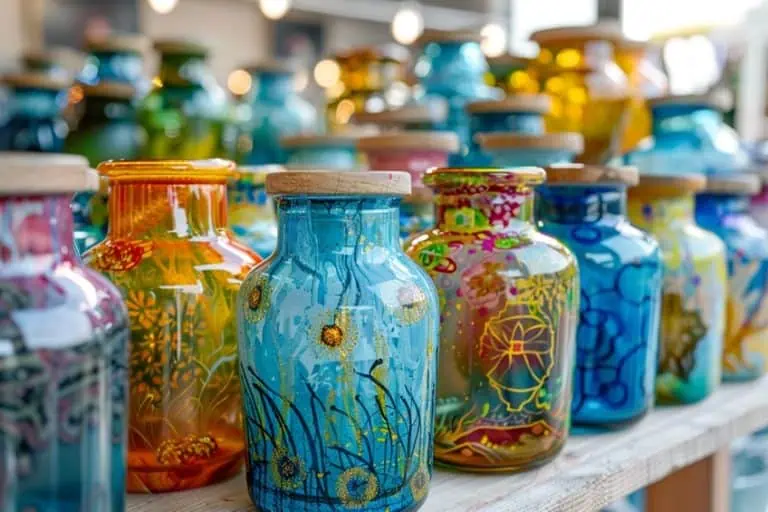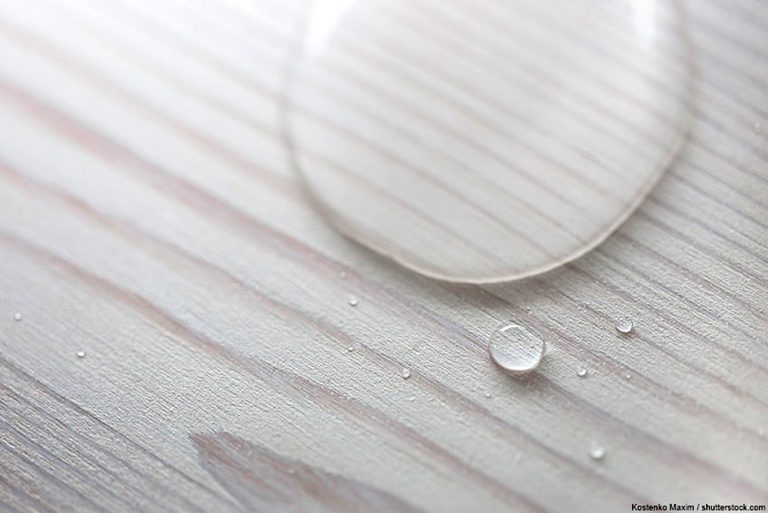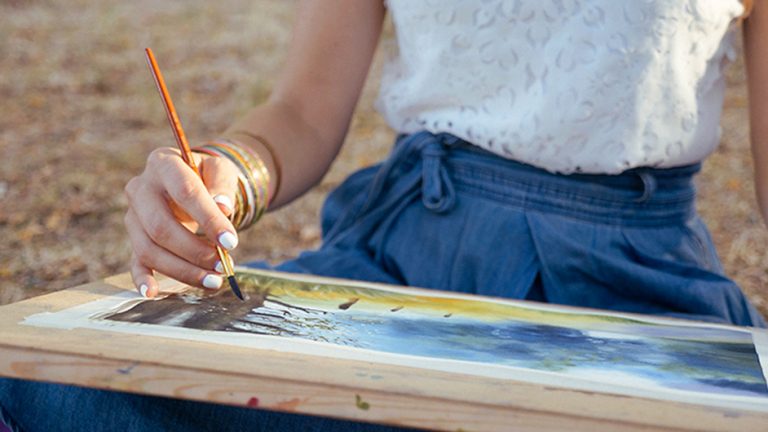Watercolor vs. Acrylic – What are the Differences?
This post may contain affiliate links. We may earn a small commission from purchases made through them, at no additional cost to you.
While watercolor paint and acrylic paint may seem similar to some people because of their affordability and water-solubility, they are actually very different. In this article, we will explain the difference between watercolor and acrylic paint. We will also be discussing when and why you would choose to use either type of paint. While looking at acrylic vs. watercolor we should always remember that each paint has its strengths and weaknesses and neither is inherently better than the other.
Table of Contents
What Is Watercolor Paint?
Watercolor paints are vibrant, transparent water-soluble paints that are almost always made using organic materials. Sometimes watercolor paint is synthetic and is made from synthetic glycol, but most watercolor paints on the market are made from pigment, binder, distilled water, and gum arabic. Watercolor paint is often thought of as a medium that is suited for beginners because of its abstract applications and free-flowing nature, but the truth is that watercolor techniques are quite advanced and very difficult to master.
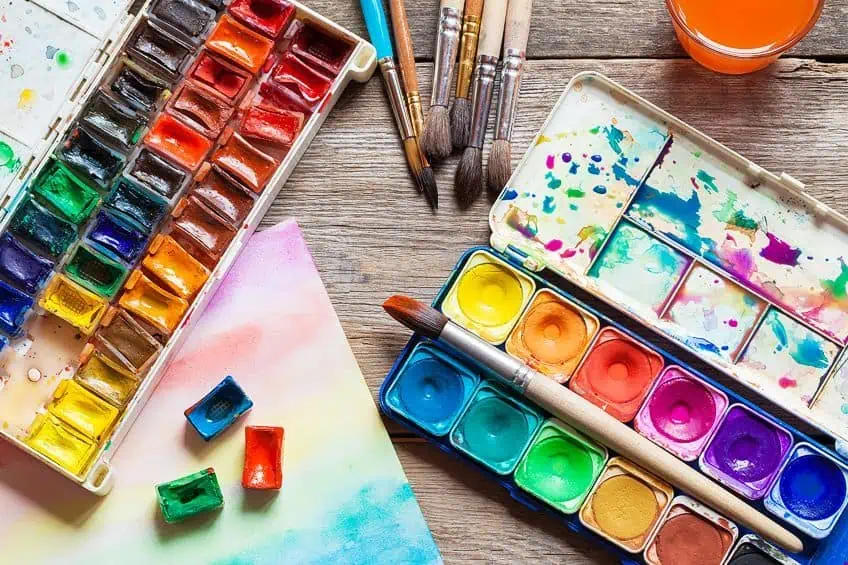
Suitable Surfaces
Watercolors are most commonly used on watercolor paper, watercolor boards, or watercolor pads although they can also be applied to other surfaces if they have been primed with watercolor gesso. Watercolors cannot be used on normal paper or canvas because the water will seep through and break it down. It would also be impossible to create a cohesive image as the paint would bleed and spread outwards uncontrollably. Since watercolor paints are primarily used on paper, watercolor art will not stand the test of time as well as acrylic art would. Many watercolor artists also do not varnish their pieces because it alters the colors and effects of their paintings.
This means that your final watercolor pieces will be tricky to display without proper framing as they are quite fragile and prone to damage from environmental factors such as humidity or UV exposure.
Translucency
Watercolor paint has a certain vibrancy and brilliance that is different from acrylics and even oils. In a way, the colors are less saturated but still retain vibrancy. As an artist working with watercolor paints, you will have a lot of control over the translucency of your paint. To create a deeper color you will simply add less water. The translucency of watercolor paint means that it is easy to clean off surfaces or from clothing. You can simply wipe a surface off with a cloth or rinse the clothing with water to remove any messes you make while using watercolor paint.

Affordability
Watercolor paint dries fairly quickly but can be rewetted on the paper to change or alter it. If any paint dried up on your palette you can also just add water and be able to use it again. This means that you don’t have to worry about any of your paints going to waste. Considering the lack of waste coupled with the affordability of the paints themselves, watercolors are a very pocket-friendly choice for the frugal artist. You also do not need much additional equipment for watercolor painting. All you really need is your paints, some watercolor paper and a good set of watercolor paintbrushes. The paint is available in tubes and in pans, which are both fairly small and easy to transport.
Being compact, transportable, and not needing an easel is a big plus for artists who like to travel or paint outdoors.
Coverage
Watercolor paints last quite a long time since a small amount of paint can easily be mixed with water to cover a large area. You also do not need to cover an entire area with paint when working with watercolors. A technique used with watercolor is to utilize the white from the paper to create the lighter values in your work rather than to directly apply white paint to your piece.

Correcting Mistakes
Some issues you may encounter with watercolor paint are that it is quite hard to create layers without reactivating the layers below and that you cannot simply cover up a mistake with a fresh layer of watercolor. A trick to layering successfully is to make sure that you wait until a layer has fully dried before proceeding to add a new one. As for when you make a mistake with watercolor paint, instead of trying to cover it up you will wet the area and lift the paint off with a cloth or paper towel.
Once you have lifted the paint, you will repaint the area to correct the mistake.
- Vibrant
- Water-soluble
- Usually made from all-natural ingredients
- Easy to clean
- Affordable
- Can be rewetted if it dries on your surface or palette
- Can be lifted to correct mistakes
- It will be used on many paintings before being used up
- Great to blend with
- Non-toxic
- Not very durable
- Can only be used on surfaces made for watercolor
- Can be tricky to layer with
- Vulnerable to UV and humidity
What Is Acrylic Paint?
Acrylic paint is used by many artists because it is affordable and easy to use. Artists who create acrylic art must be prepared to work quickly and attentively if they want to avoid having their acrylic dry up on their brushes or palette. This is because acrylic is water-soluble while wet, but it hardens to be water-resistant. Acrylic paint is made from an acrylic polymer emulsion that is bound together with pigment in water. As the water evaporates while the paint dries, the acrylic polymer is left behind with the pigment in a hard, water-resistant film. This means that if acrylic has dried and you decide you would like to make a change, you will have to paint over the area since it cannot be re-wetted and reworked like with gouache or watercolor paint.

Drying Time
Acrylic paints also dry very quickly which means that if you are not fast and careful, your paints could dry up in your palette and be very difficult to remove. It helps to keep a spray bottle nearby and lightly mist your paints every now and again to prevent them from drying out prematurely. Also, be sure to never leave acrylic paint on your brushes as it will dry out and ruin your brushes much faster than you would think. If you get acrylic paint on your clothing or your furniture you should clean it immediately with soap and water because it will be difficult or even impossible to completely remove once it has dried.
Blending with acrylic paint is also quite tricky because of its fast drying time, and while working on larger paintings can be difficult to achieve a unified look across the whole painting.
Finishes and Color Shifting
Acrylic paints dry to a shiny, glossy finish with a darker color than when they were wet. This can be tricky for an artist that is just beginning to mix acrylic paints but is something you will adapt to over time. Experienced artists account for this color shift like second nature and it is hardly a problem for them anymore.

Consistency and Texture
Acrylics are available in many different consistencies or viscosities, from fluid to heavy-bodied and thick. You can even purchase many different mediums that help you alter the characteristics of your acrylic paint. There are acrylic mediums that allow you to alter the finish, texture, consistency, drying time, or transparency of your acrylic paint in almost any way you can imagine. Other kinds of paint do not allow for the same level of customization and convenience. It is this sort of versatility that makes acrylics so helpful for artists that are just starting and are looking to experiment and discover what they like. Acrylic paint can also be thinned with a small amount of water to create washes or add a level of transparency.
Just be sure not to add too much water or else you could break down the binder in the paint which will cause adhesion issues.
Health and Safety Precautions
Acrylics themselves are non-toxic but should not be ingested or applied directly to the skin. This is because the pigments can sometimes have various toxins. If you are unsure, always be sure to check the label. Acrylic paints also do not have odors that pose health risks but they may cause headaches or dizziness in young children or people with sensitivities.
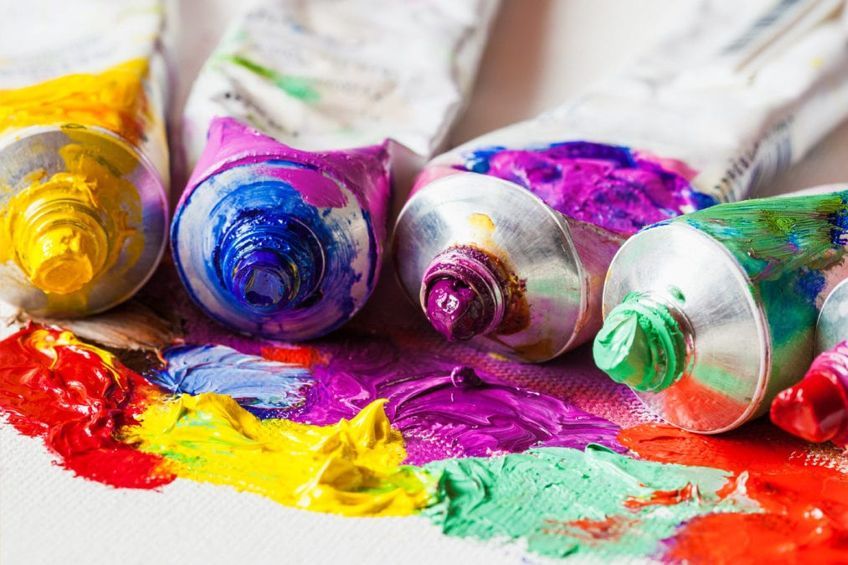
Suitable Painting Surfaces
Acrylic paint is perfect for layering and creating detail while still being easy to use. You can also put acrylic paint on any porous surface with ease. This means that wood, paper, and canvas can all readily accept acrylic paint, but smoother surfaces such as plastic, glass, or metal will need to be primed first. Acrylic paints are also not prone to fading or yellowing and are not nearly as delicate as watercolor paints.
They may still need to be coated with a layer of protective varnish if you plan on keeping them displayed or lasting as long as possible.
- Water-soluble when wet
- Water-resistant when dry
- Quite durable
- Can be used on many surfaces
- Great to layer with
- Affordable
- Easy to clean while wet
- Non-toxic
- Available in many different consistencies
- Can be mixed with mediums to change characteristics
- Dries very quickly on brushes and in palettes
- Can be tricky to blend
- Primer and varnish may be necessary
- Colors will dry to be darker
Acrylic Paint vs. Watercolor Paint
As you may have seen by now, there are quite a few similarities and differences between acrylic and watercolor paint. The main similarities are that both paints are water-based, water-soluble, and non-toxic while some of the difference between watercolor and acrylic includes everything from painting surfaces to ingredients.

You should consider all the qualities of both paints while you weigh up acrylic vs. watercolor paint before choosing a new medium for your next project. Both paints are lovely and have their intended applications. Below we have compared them in a convenient table to summarise everything covered in the article. We hope that this can give you the last bit of insight needed for you to choose the perfect medium for your painting style.
| Acrylic Paint | Watercolor Paint | |
| Available in different consistencies | ✔ | ✘ |
| Can be mixed with mediums to create different textures | ✔ | ✘ |
| Can be rewetted once dry | ✘ | ✔ |
| Color shift when dry | ✔ Darker than when wet | ✔ Lighter than when wet |
| Cost | Affordable | Affordable |
| Drying Time | Very fast | Fast |
| Durable | ✔ | ✘ |
| Easy to blend with | ✘ | ✔ |
| Easy to clean | ✔ | ✔ |
| Easy to layer with | ✔ | ✘ |
| Method to correct mistakes | Paint over mistakes | Lift with cloth or paper towel |
| Natural ingredients | No | Usually made from natural ingredients |
| Needs primer | ✔ | ✘ |
| Needs varnish | ✔ | ✘ |
| Opacity | Opaque | Transparent |
| Surfaces available for painting | Wood, leather, fabric, glass, metal, plastic, ceramics, brick, paper, canvas | Watercolor paper, watercolor canvas, watercolor boards, and watercolor pads |
| Toxicity | Non-toxic | Non-toxic |
| Water-soluble | ✔ | ✔ |
Even though watercolor paint and acrylic paint have their differences they are both capable of creating beautiful, unique pieces of art. All it will take is an artist that is willing to dedicate the time to practice and learn each medium’s techniques. When thinking about watercolor vs. acrylic for beginners and which is better, the main factor to consider is how you prefer to paint and what you are hoping to achieve. While most people find that acrylic is a very good starting point, you should use any medium that sounds right for you. Both mediums will create artworks with different characters and will evoke different feelings. Watercolors will look very soft and even ethereal while acrylics tend to best create high-detail, realistic effects on paintings.
Frequently Asked Questions
Is Watercolor or Acrylic Better Suited for Beginners?
Acrylic paint is a very forgiving medium that makes it suitable for learning. Acrylic dries quickly and layers well, while watercolor can be uncontrollable and is much harder to layer for beginners. Many artists find it very useful to begin experimenting with acrylic paints and then move on to using watercolor paints. When it comes to watercolor vs. acrylic for beginners, we suggest choosing acrylic.
Can I Get a Watercolor Effect Using Acrylic Paint?
If you are looking to get a watercolor effect using acrylic paint you will want to start with a soft-bodied acrylic, fluid acrylic, or acrylic ink. You should also use transparent pigments such as Phthalo Blue or Hansa Yellow. From there just be sure not to dilute the paint with more than about 25% water or else you run the risk of breaking down the binder in your acrylic and having some adhesion issues once you begin painting. Alternatively, you could add a matte thinning medium to your acrylic paint until it resembles watercolor paint when applied on paper.
Can I Combine Watercolor Paint and Acrylic Paint?
Yes, you absolutely can mix acrylic paint and watercolor paint together and then apply them directly onto your paper. Alternatively, you could paint a layer of watercolor and then add a layer of acrylic over it. Another option is to use watercolor over acrylic paint. Using watercolor over acrylic will cause the paint to run off of any texture and pool in the ridges. You can freely experiment with mixing watercolor and acrylic paint as you please, just be sure to use paper that can accept watercolor without warping!
Is Watercolor Paint or Acrylic Paint Cheaper?
Both watercolor and acrylic paint are around the same price if you are looking at paints of the same quality. The main factor that could throw this off is that when painting with acrylic, you may need a primer and a varnish which could contribute towards your total cost.
Matthew Matthysen is a multidisciplinary artist. He completed his fine art degree, majoring in History of Art and Contemporary Drawing Practice at the University of Witwatersrand, South Africa. Before joining acrylgiessen In 2020, Matthew worked part-time as an art teacher at Reddford Blue Hills High school. Matthew creates drawing and painting tutorials for acrylgiessen and captures them not only photographically and in written form. He also records the creation of his works in his own creative studio as in video format, from which later with a voiceover and a video editor also drawing tutorials for the Youtube channel of acrylgiessen are created.
Learn more about Matthew Matthysen and about acrylgiessen.



